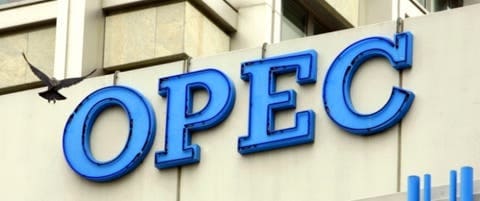
Oil Slips Ahead of OPEC Meeting
Oil price rose from its biggest slump since November 2020, ahead of a key meeting of the Organization of Petroleum Exporting Countries (OPEC) that may see some supply returned to a fast-tightening market.
US crude rose 2.2 per cent to $62.90 a barrel, after opening at $61.53, and hitting a low of $61.53 while Brent crude rose 2.2 per cent to $65.90 a barrel, after opening at $64.50, and hitting a low of $64.50.
US crude lost 3.0 per cent while Brent crude futures fell 3.9 per cent, in their second straight daily loss on profit-taking from a 13-month high.
But back home in Nigeria, fuel queues continued to swell across the country despite assurances by the Nigerian National Petroleum Corporation (NNPC) that it was not planning any increase in the pump price of petrol this month.
Under the deregulation of the downstream sector of the petroleum industry, the pump price of petrol is tied to the price of crude oil in the international market.
Amid fears that with crude oil overshooting the $60-per-barrel mark, that NNPC may hike the pump price of petrol, retailers have tightened sales on the grounds of supply scarcity from depots where they alleged that ex-depot price has gone up, despite NNPC’s assurances of no price adjustment.
The corporation, in a statement, had said that contrary to speculations of an imminent increase in the price of petrol in the country, the ex-depot price of petrol in March would remain unchanged.
Just like the weekend, many fuel stations in Abuja, excluding the NNPC retail stations, were not selling the commodity while the few that were selling, had long queues to contend with.
The situation led to traffic snarls within the Federal Capital Territory (FCT), including Olusegun Obasanjo Way and Sultan Abubakar Way.
However, the crude oil rebound came after the commodity took a pause on Friday on profit-taking from a 13-month high, partly due to hopes about the United States stimulus measures and the latest positive updates regarding the COVID-19 vaccines.
Oil prices gained around 17.5 per cent in the fourth consecutive monthly gain, as the oversupply concerns receded after OPEC+ compliance with the agreed supply cuts and Saudi Arabia’s voluntary cut.
It is expected to loosen the taps after prices get off to their best-ever start to a year, it’s unclear how robustly the group will act, with the Saudi Arabian Energy Minister, Abdulaziz Bin Salman, calling for producers to remain “extremely cautious.”
Oil’s recovery from the impact of the pandemic has been driven by Asian demand, as well as fiscal and monetary stimulus as data yesterday showed most key manufacturing economies gained ground last month, with China staying in expansionary territory.
Positive sentiment in equity markets also aided crude, while President Joe Biden’s $1.9 trillion relief plan moved closer to realization after passage at the House of Representatives.
Saudi Arabia’s output curbs, the improving demand outlook as vaccines are rolled out, and the growing popularity of commodities as a hedge against inflation have pushed oil higher this year.
There has been a raft of bullish calls in recent weeks predicting the rally will continue as the producer response trails consumption, while maintenance in North Sea fields is set to reduce supply.
At stake in Thursday’s meeting is how much OPEC+ output gets restored and at what pace, with current reductions amounting to just over 7 million barrels a day, or 7 per cent of global supply.
The 23-nation coalition will decide whether to revive a 500,000-barrel tranche in April, and in addition, whether the Saudis confirm an extra 1 million barrels they’ve taken offline will return as scheduled.
The freeze-driven shuttering of core sections of the U.S. refining system isn’t all good news for rival plants in Europe because down at the bottom of the barrel, losses are deepening.
Kazakhstan relaxed its oil production restraint in February, allowing output to jump to its highest since the current OPEC+ supply pact came into effect at the start of May.
Meanwhile, the NNPC has asked Nigerians to shun panic buying and urged marketers to halt hoarding products while also calling on authorities to step up monitoring to ensure compliance.
But the Department of Petroleum Resources (DPR) failed to respond to enquiries as to what it was doing to ensure that filling stations do not hold back petrol even when they have it in stock.
Calls to the Head of Public Affairs, DPR, Mr. Paul Osu, were not answered while a text message to him remained not replied at the time of going to press.
Earlier in a statement by the Group General Manager, Group Public Affairs Division, Dr. Kennie Obateru, the NNPC had stated that the corporation was not contemplating any raise in the price of petrol in March in order not to jeopardize ongoing engagements with organized labour.
It cautioned petroleum products marketers not to engage in an arbitrary price increase or hoarding of petrol in order not to create artificial scarcity and unnecessary hardship for Nigerians.
The corporation stated that it has enough stock of petrol to keep the nation well supplied for over 40 days and urged motorists to avoid panic buying.

